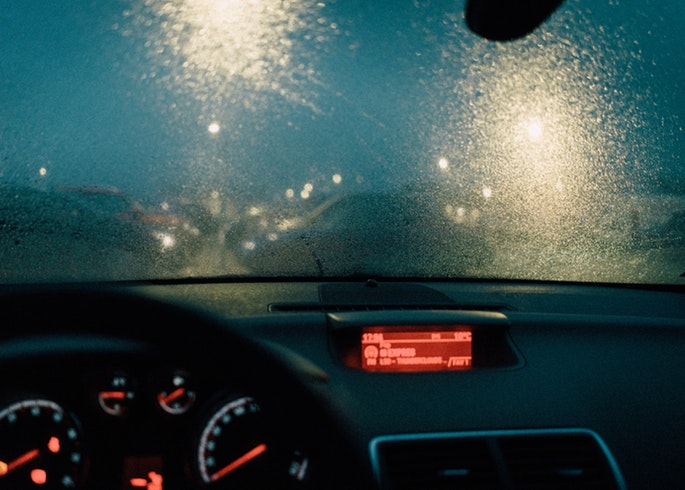
Florida isn’t called the Sunshine State for nothing – we average around 3,000 hours of the good stuff per year. South Florida sees approximately 249 days of sunshine annually, which means that for the sun-seekers, we’re the place to be. However, it’s not all sunshine and daisies here. After all, you don’t get a rainbow without the rain (wondering how many more clichés we can fit into one blog post? Keep reading, friends, these are just a drop in the bucket!).
During the rainy season, the heavens will dump a ridiculous 37 inches of rain on us. Staying safe when behind the wheel is extremely important when trying to maneuver your car in a deluge, yet it almost seems like even the most seasoned Florida drivers suddenly forget how to manage their vehicles when the sky turns grey.
To keep your vehicle on the road (and out of the many retention ponds that dot the highway), take heed of this practical advice. After all, you may be able to buy a new car after an accident, but this is the only body you’re going to be issued in this life.
Slow down.
The maximum speed limit here in South Florida is 55 mph, unless otherwise posted.Ya’ll, that’s not exactly a high score to beat. In other words, slow down. Reaction times are delayed at higher speeds, and when trying to manage the road in inclement weather, seconds literally count. When the weather starts to get yucky, drop to a more manageable speed. Even if you’re an awesome driver, that other guy on the road might not be.
Turn on your headlights.
The law says you need to turn on your headlights when visibility is low, such as a half hour before sunrise and a half hour after sunset.This counts for rainy weather, too. The headlights aren’t just to help you see what’s ahead of you; it’s also so other drivers can see you.(It should go without saying, but please don’t be that jerk who blinds everyone else with their high beams when driving, either. When following within 300 feet of another vehicle, or facing oncoming traffic within 500 feet, please switch to your low beams.)
Know how to handle hydroplaning.
The danger of hydroplaning is very real when driving in the rain. A car can start to lose control in as little as 1/12 of an inch. Hydroplaning occurs when your tires decide to go jet skiing over the road’s surface, and yeah, it can be downright terrifying. If your car starts to hydroplane, resist the urge to smash down on your brakes or jerk your steering wheel. Instead, slowly ease off the accelerator and try to keep your tires straight.
Use your wipers.
This one may seem like common sense; that’s what they’re there for, right? Surprisingly, many people tend to forget all about their windshield wipers when the rain starts to drizzle down. Turning on the wipers in a light sprinkle may seem like overkill, but believe me, your car isn’t about to start grumbling about being overworked just because you switched on your wipers. Using them can greatly improve your visibility, which can make all the difference when it’s all but obliterated by a downpour.
When in doubt, pull over.
If you don’t feel safe driving in the rain, there’s no shame in pulling over and waiting it out. Just make sure you make yourself visible when you’re parked on the side of the road. While it’s illegal to use your hazard lights while driving in South Florida, feel free to flick them on if you’re going to wait out the storm on the shoulder.
Not to toot our own horns, but we know a thing or two about staying safe in South Florida weather. Driving in South Florida can be a real pain in the neck, but these life-saving tips can help you stay cool as a cucumber when the going gets tough. Haste makes waste, and it’s better to be safe than sorry (okay, sorry, we’re done with the clichés now!).
But seriously, friends. Be careful out there! By maintaining a reasonable pace, being mindful of other drivers, and knowing how to manage hydroplaning, you can drive like a pro – and stay safe!–when the skies open up during our bountiful rainy season.
Auto Tags of Florida can help you get your paperwork in order before you go for a drive. Contact us (954)848-4808 for same day service.
Photo Credit: Lukas Rychvalsky